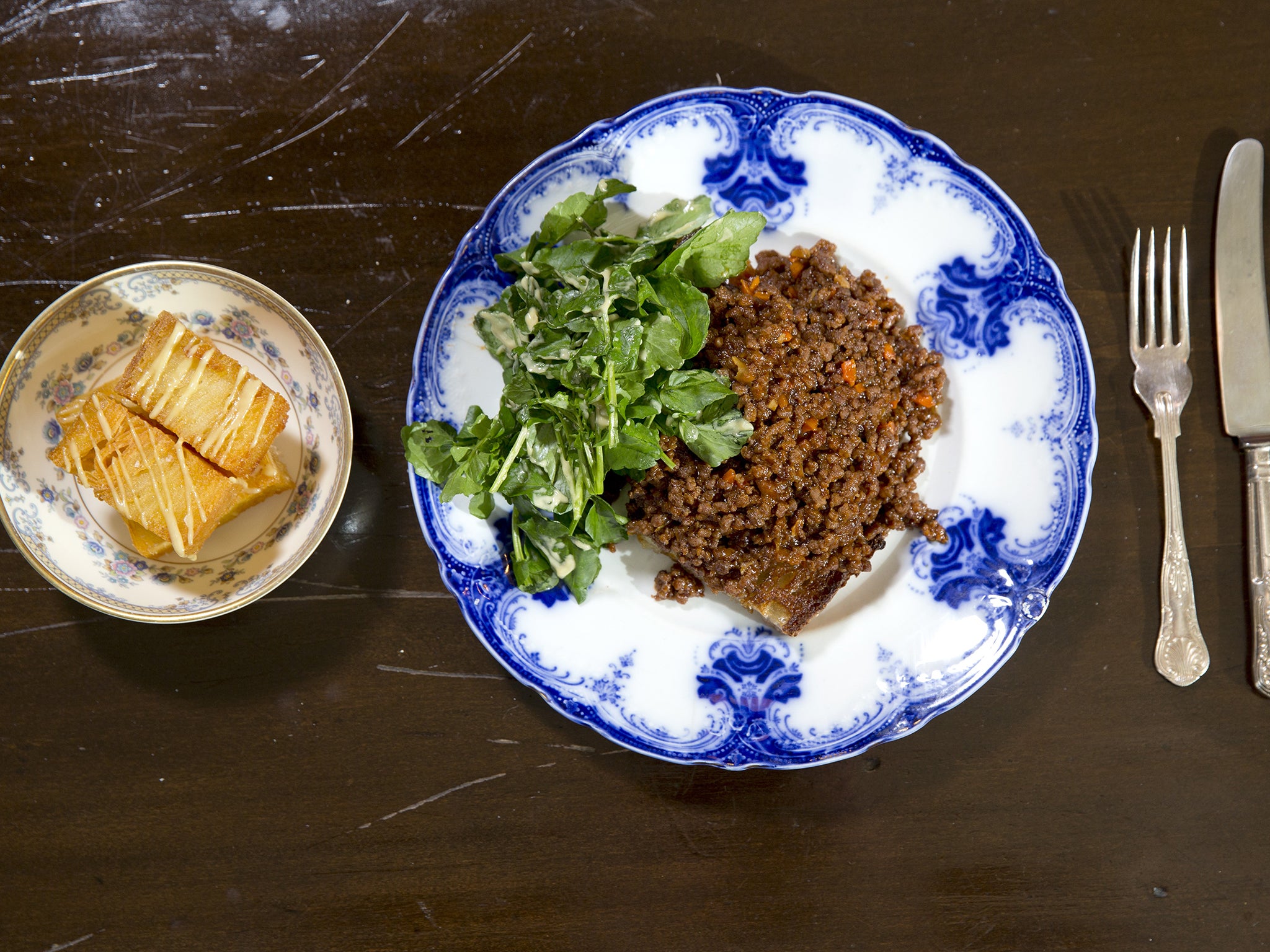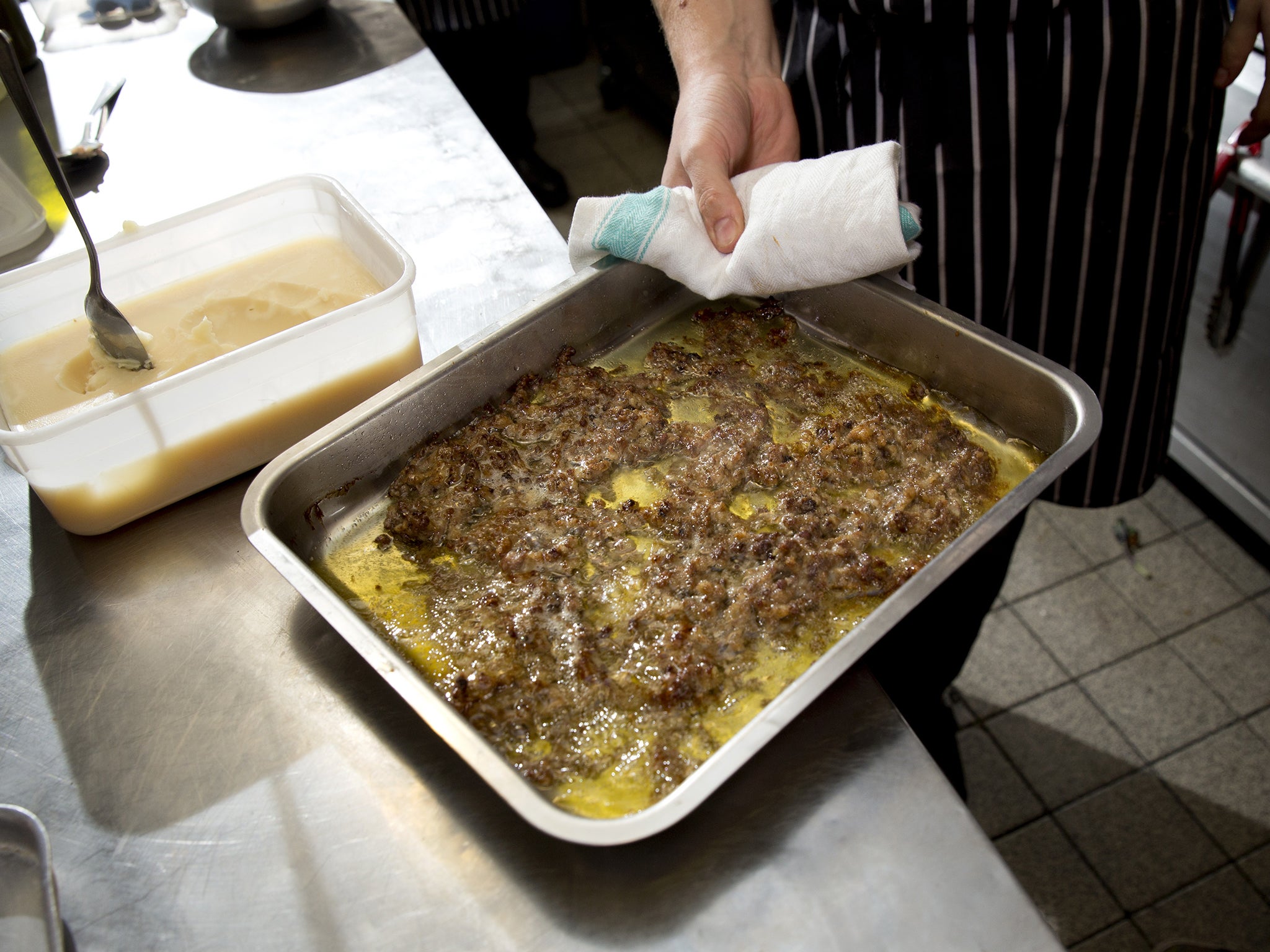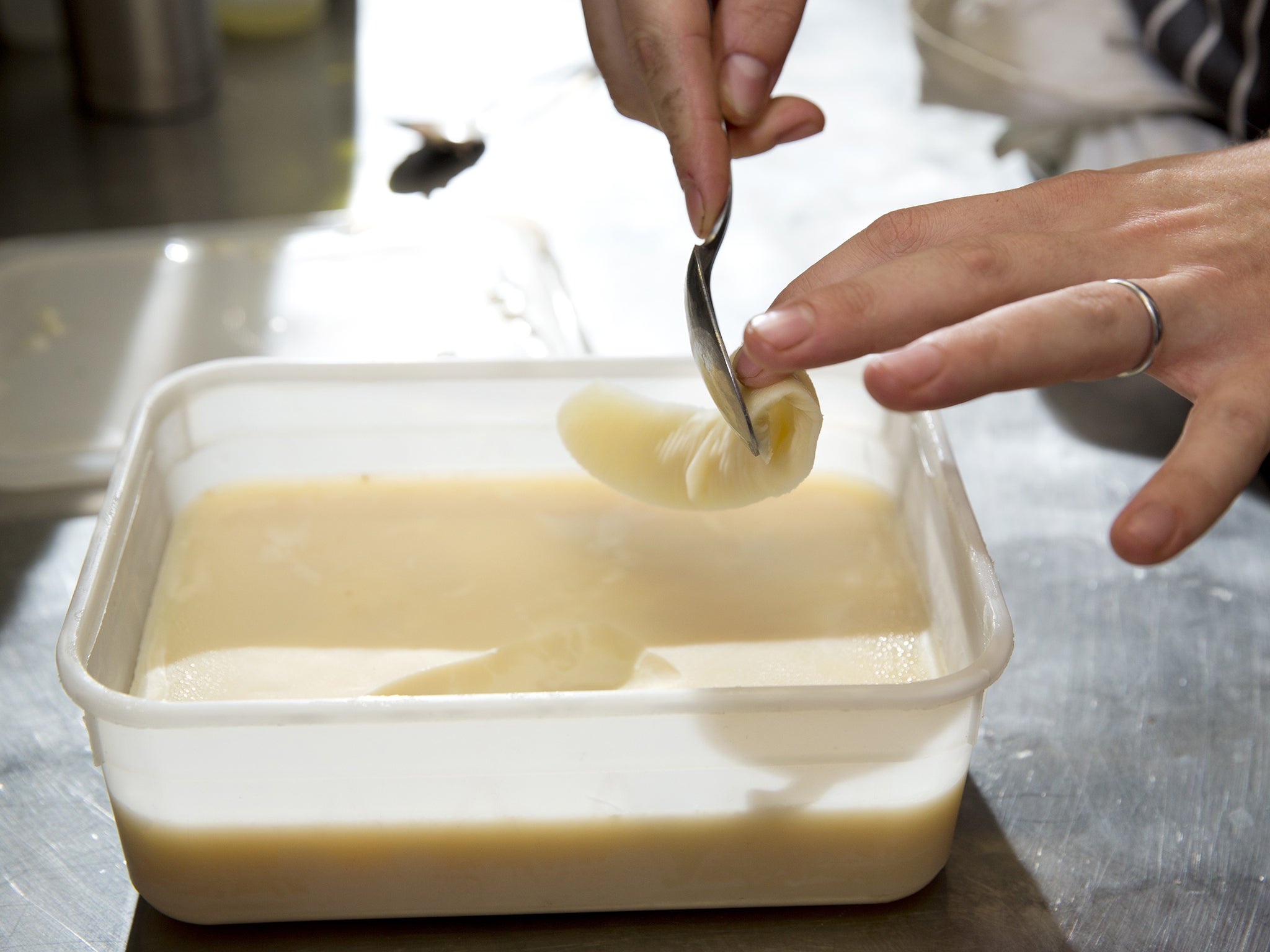Dripping is one of Britain's forgotten ingredients - now it's making a timely comeback
Dripping is creeping back on to the menu - and not just on toast. Eager to get his anxiety-free fatty fix, Gareth May finds out more about this ration book favourite

Your support helps us to tell the story
From reproductive rights to climate change to Big Tech, The Independent is on the ground when the story is developing. Whether it's investigating the financials of Elon Musk's pro-Trump PAC or producing our latest documentary, 'The A Word', which shines a light on the American women fighting for reproductive rights, we know how important it is to parse out the facts from the messaging.
At such a critical moment in US history, we need reporters on the ground. Your donation allows us to keep sending journalists to speak to both sides of the story.
The Independent is trusted by Americans across the entire political spectrum. And unlike many other quality news outlets, we choose not to lock Americans out of our reporting and analysis with paywalls. We believe quality journalism should be available to everyone, paid for by those who can afford it.
Your support makes all the difference.There was a time when a jar of beef dripping sat on every stove top. The fatty, gamey-tasting sludge was spread on toast or used to make ultra-crisp roast potatoes. Then, a few decades ago, saturated fat became the bugbear of nutritionists, the Bond villain, if you will, of the culinary universe – and beef dripping fell out of favour, along with many other fatty treats.
But now that science is starting to point the finger at sugar and carbs as the culprits behind the surge in obesity and heart disease, saturated fat is getting a bit of a reprieve – and dripping is creeping back on to the menu. Eager to get my anxiety-free fatty fix, I wanted to learn more about this ration book favourite.
Earlier this year, butcher James Whelan of Nenagh, in County Tipperary, Ireland, won a prestigious Great Taste Award for his Angus and Hereford beef dripping, seeing off 10,000 other great "tastes", in what is widely regarded as the Oscars of the food world. A fatty by-product winning out over raisin scones and cappuccino marshmallows? Rendered cow rump better than porchetta and chilli bacon jam? Is dripping finally coming back?
The Quality Chop House in Farringdon, London – a Grade II listed building, complete with knee-knocking pews and galleon windows and boasting a restaurant, butchers and deli – is one of the few places in the capital to make its own dripping in-house. I joined the head chef Shaun Searley, to find out more about this war-time stalwart. First, what exactly is beef dripping?
"Dripping is rendered fat," Searley tells me, matter-of-factly. He goes on to explain that rendering fat separates it from connective tissue and meat, processing it into a clear liquid, free of protein and impurities. It's essentially turning a waste material into useful – and incredibly tasty – produce. Not that taste was the main reason people had dripping sandwiches during the First World War, of course.
"The days of rationing everything meant that invaluable ingredients such as dripping weren't thrown away," Searley says. Nowadays, however, we're free to enjoy it for its flavour, too. To those in the know, flavour and fat have always gone hand in hand. When judging meat for its quality, for example, fat is one of the first things that butchers and chefs take into account. It is for this reason that dripping makes such a great flavour enhancer. As Searley says: "That interesting flavour the farmer is trying to show will permeate through the fat and into your dripping. That's why those that have experienced it before get really excited, and as for the younger generation, they seem won over, too."
Type "beef dripping" into any social media platform and you can see that the movement is growing, led by Instagram-filtered images of dripping-fried chips with so much crunch they look as if they could crack the screen.
The on-trend, cost-effective, snout-to-tail ethos is another part of dripping's revolution. Every afternoon at The Quality Chop House, the trimmed fat from butcher Oliver Seabright's block is put through the mincer and carried into the kitchen, alongside the prime cuts for that day's menu. After that, it's an easy process of transforming what many call waste into a key component of Searley's signature dishes.
He spreads the fat on to the surface of a baking tray and whacks it in an oven pre-heated to 120 degrees Celsius. About 20 minutes later, he pulls it out and there is a shallow puddle of clear liquid. "The trick is not to roast it, just slowly render the liquid fat off on a low heat," Searley tells me. Some of the solids won't render at all, they'll just crisp up and brown. The mincing isn't essential; chopped or sliced fat will still yield about 50 per cent liquid which, once passed through a sieve (to ensure that there are no bits of protein such as connective tissue in there with it), can be stored in a sealed container in the fridge for up to a month. It can also be re-used two or three times, after which it will become darker; and once it goes a rusty opaque colour, it's time to throw it away.
With my nostrils suitably assaulted with Sunday roast goodness, it is time to sample two of The Quality Chop House's cornerstone dishes: Longhorn mince on dripping toast, and confit potatoes. Both are exceptional. The dripping toast, a super fancy version of fried bread, is a sophisticated homage to the great British greasy spoon, and as for the confit potatoes – like dauphinoise, but baked with dripping rather than cream, compressed overnight and deep fried in vegetable oil to finish – I'll never look at a shop-bought croquette again. As Searley says, it is the "gamey" quality of the dripping that gets you. It ratchets everything up a notch, until you end up in beefy heaven.

Far from being a lone advocate, Searley is not the only chef going dippy for dripping. At Story, the Michelin-starred restaurant in Southwark, London, the bread course is an edible candle made of dripping; Rick Stein's fish and chips at his restaurant in Padstow are fried in dripping; and Hawksmoor, London, triple-cooks its chips in – bingo – dripping. According to Richard Turner, Hawksmoor's executive chef: "Beef dripping is a great forgotten British ingredient and we should be using it more; it's the missing ingredient for truly great fish and chips."
It's not just flavour that makes beef dripping such an exciting prospect. If you're using fat extracted from a joint of beef, you know where that fat has come from, unlike some supermarket oils. Using dripping instead of buying oils is a money-saver, too. You've paid for the fat, in terms of weight, so you may as well use it. Throw in the ethical argument of using everything that the animal has to offer and it's a no-brainer. I can't help but wonder, if only it were called something else.
Growing up with a father born in the post-war era, with a ration book stuffed in his breast pocket and beef dripping sandwiches in his backpack, the connotations of dripping (as I'm sure others can testify) were a million miles away from hashtag-happy hipsters tweeting triple-cooked chips to the masses. Dripping was nothing to shout about. It was the food of the lingering war effort, of the impoverished and struggling; the predictable punchline to my dad's 10-mile trek to school and back, wearing one shoe, because they couldn't afford the other. Dripping is the food of nostalgia; of my father's childhood, just as Alphabetti Spaghetti, and all it's consumerist-friendly connotations, was the foodstuff of mine.

As rationing ended in the mid-1950s, the promise of no-mess and easily stored oils spelled the end of this wartime essential, and it soon passed into the annals of not-so-great British food, alongside suet pudding and other stodgy fodder. It has been a long road (almost as long as the one my dad allegedly walked to school) but dripping is finally back, even for those who don't want to get their mitts mucky.
There are many places that stock ready-made dripping (The Quality Chop House sells its own; James Whelan butchers delivers to the UK and Ireland; and Tesco and Waitrose stock generic brands, too) but there are also faff-free ways to make your own. The next time that you do a roast, rather than use the sticky meat juices and fatty deposits in the bottom of the tray to make a gravy, pour them into a jug and let them settle. The fat will separate and congeal at the top and from here you can skim it off and store in the fridge for a few days (it's great for making roasties, as Heston Blumenthal argued last Christmas), retaining the meaty residue to make a stock. Alternatively, you can use the fatty-meaty-Marmite-textured gloop straight away.
In fact, to many people this is what the mention of dripping will conjure up, as it does for my mum: furtively mopping up the fatty-meaty juices with bread as the roast rests and the table is laid. There are less roguish ways to enjoy this more casual of drippings, however.
John Quilter, the London Live chef, swears by it spread on warm, toasted sourdough "with a little salt and a cheeky cuppa". And Oliver Seabright, the butcher for The Quality Chop House, says that "thinly sliced skirt with dripping brushed on the bread makes for the best roast beef sandwich ever". And who's going to argue with a man with a meat cleaver?
Join our commenting forum
Join thought-provoking conversations, follow other Independent readers and see their replies
Comments